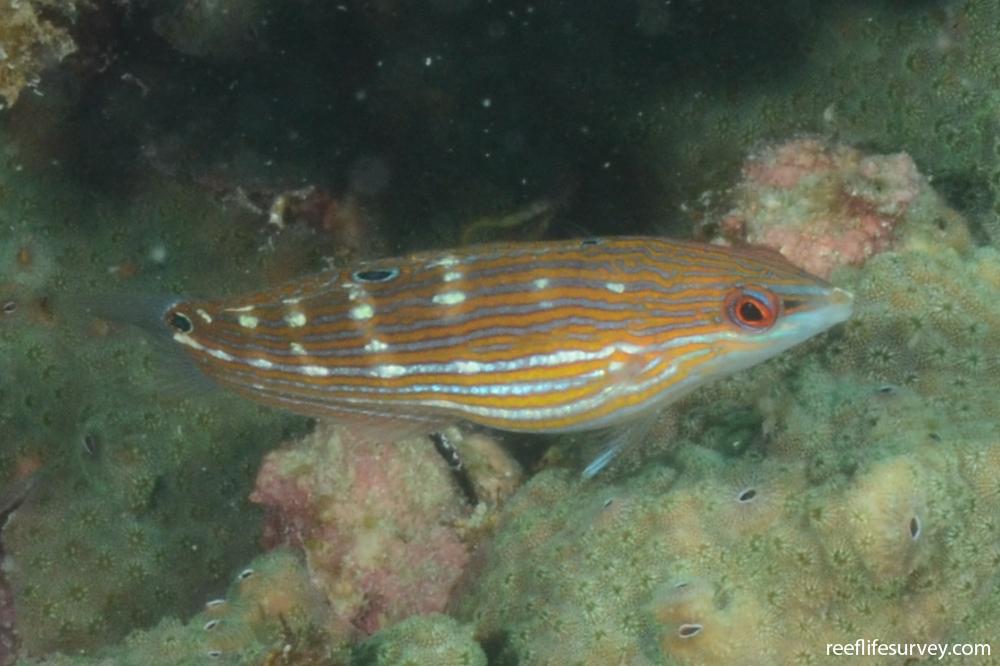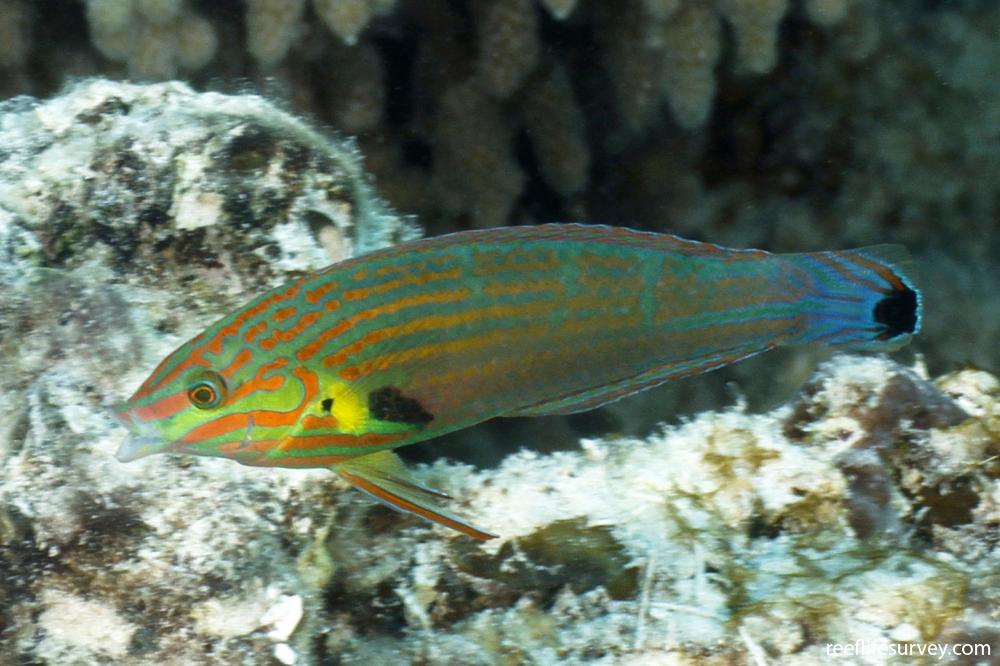Halichoeres melanurus
Hoevens Wrasse | Duskytailed Rainbowfish | Pinstriped Wrasse | Tailspot Wrasse | Three-eyed Wrasse | Halichoeres chrysotaeniaSimilar Species
Same Genus
Distribution
Tropical Indo-Pacific
Description
Males green with numerous stripes along the body, broken by a series of short bars on the back, and with yellow and black pectoral fin base. Females and juveniles with fine pinstripes, two ocelli on dorsal fin (which disappear with age), and one on upper tail base. Very common. Indian Ocean populations from western Indonesia to the Maldives considered a separate species (H. chrysotaenia), with spots on the tail of males, but this is not yet reflected in global databases.
Information
Max Size: 12 cm
Sea Temperature Range: 20.3-31.3°C
Depth: 1-25m
Habitat Generalization Index: 17.49
Also referred to as the SGI (Species Generalisation Index), this describes the habitat niche breadth of the species. Species with values less than 15 are found in a relatively narrow range of reef habitat types (specialists), while those over 25 may be found on most hard substrates within their range (generalists). Learn more here.
Conservation and Rarity
IUCN Status: Least Concern
Occurrence: Common (25.6% of sites)
Occurrence describes how often the species is found on surveys within its distribution. It is calculated as the % of reef sites surveyed by RLS divers across all the ecoregions in which the species has been observed
Abundance: Many (15 per transect)
Abundance is calculated as the average number of individuals recorded per RLS transect, where present.
Edit by: Rick S-S
























![Halichoeres sp. [orientalis]](https://images.reeflifesurvey.com/0/species_c9_574515caa4dd2.w400.h266.jpg)




































